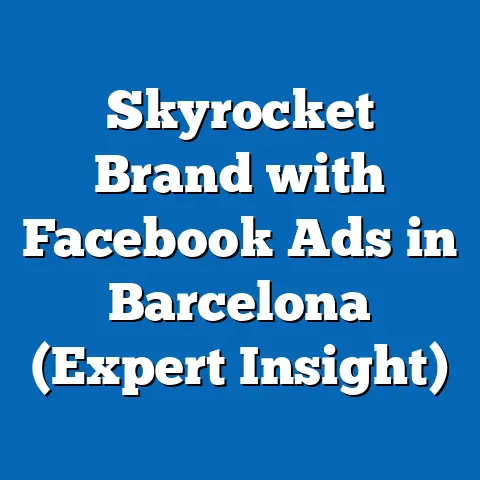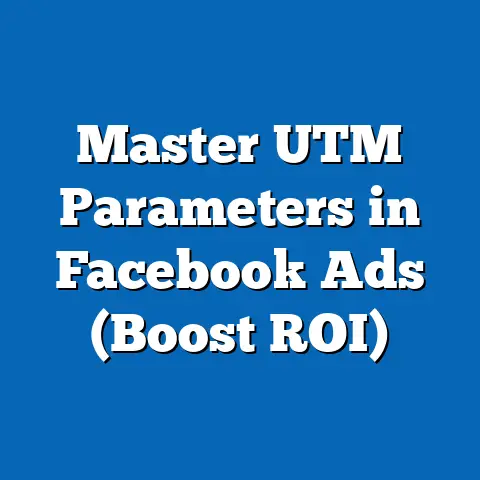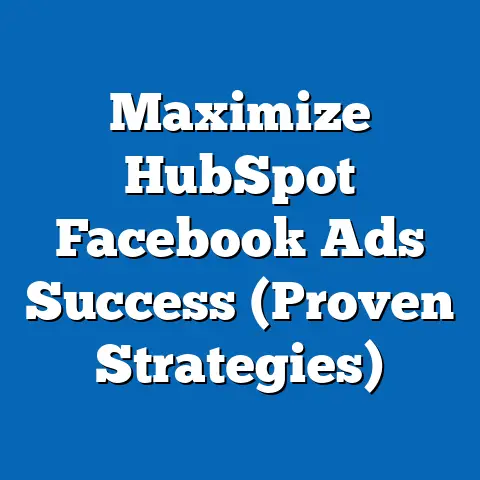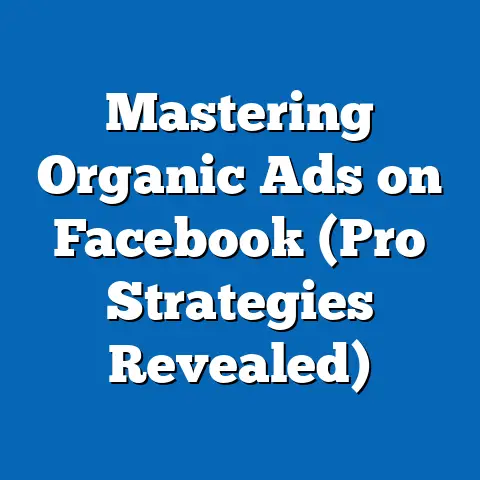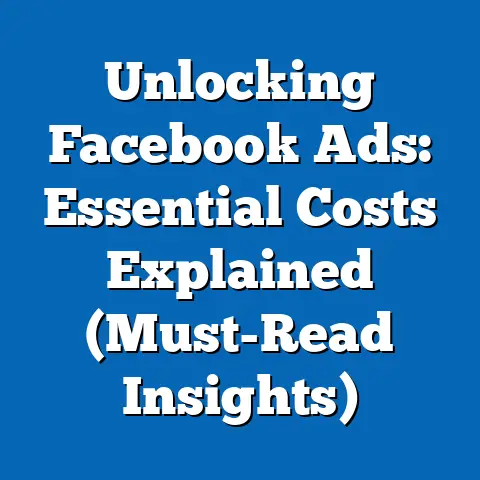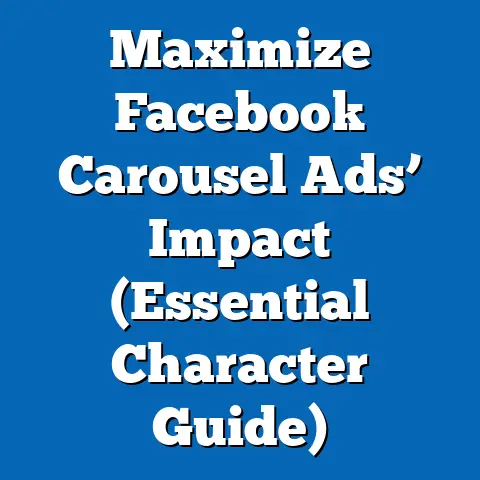Master Facebook Ads Alternatives (Pro Tips Revealed)
I’ve been in the digital marketing game for a while now, and one thing I’ve learned is that putting all your eggs in one basket – especially when it comes to advertising – is a recipe for potential disaster. Facebook Ads, while powerful, isn’t the be-all and end-all. In fact, according to recent studies, over 70% of marketers are actively exploring alternative platforms to Facebook Ads due to rising costs and increasing competition. That’s a significant number, and it speaks volumes about the need to diversify your advertising strategies.
In this article, I’m going to dive deep into why relying solely on Facebook Ads can be limiting, and then I’ll introduce you to some fantastic alternatives that could significantly boost your marketing efforts. I’ll share my own experiences, sprinkle in some pro tips, and hopefully, inspire you to broaden your advertising horizons.
Understanding the Limitations of Facebook Ads
Let’s face it, Facebook Ads can be a rollercoaster. One day you’re seeing incredible results, the next day your campaigns are tanking. There are several reasons for this.
-
Algorithm Changes: Facebook’s algorithm is constantly evolving. What worked yesterday might not work today. This means you need to stay on your toes and continuously adapt your strategies. I remember one instance where a client’s campaign was performing exceptionally well for months. Then, overnight, the algorithm shifted, and our cost per acquisition (CPA) skyrocketed. We had to scramble to re-optimize everything.
-
Ad Fatigue: People get tired of seeing the same ads over and over. This leads to lower click-through rates (CTR) and higher costs. I’ve seen this happen countless times, especially with retargeting campaigns. You need to constantly refresh your creatives and messaging to keep your audience engaged.
-
Rising Costs: As more businesses flock to Facebook Ads, competition increases, driving up ad costs. This is particularly true during peak seasons like holidays. I’ve noticed a steady increase in the cost per thousand impressions (CPM) over the years, making it harder for small businesses to compete with larger corporations.
-
Limited Audience Reach: While Facebook has a massive user base, it doesn’t encompass everyone. If your target audience isn’t active on Facebook, you’re missing out on potential customers. I worked with a B2B company that was heavily invested in Facebook Ads, but their target audience – senior executives in the manufacturing industry – simply wasn’t spending much time on the platform. We needed to explore alternatives to reach them effectively.
Algorithm Changes: Facebook’s algorithm is constantly evolving. What worked yesterday might not work today. This means you need to stay on your toes and continuously adapt your strategies. I remember one instance where a client’s campaign was performing exceptionally well for months. Then, overnight, the algorithm shifted, and our cost per acquisition (CPA) skyrocketed. We had to scramble to re-optimize everything.
Ad Fatigue: People get tired of seeing the same ads over and over. This leads to lower click-through rates (CTR) and higher costs. I’ve seen this happen countless times, especially with retargeting campaigns. You need to constantly refresh your creatives and messaging to keep your audience engaged.
Rising Costs: As more businesses flock to Facebook Ads, competition increases, driving up ad costs. This is particularly true during peak seasons like holidays. I’ve noticed a steady increase in the cost per thousand impressions (CPM) over the years, making it harder for small businesses to compete with larger corporations.
Limited Audience Reach: While Facebook has a massive user base, it doesn’t encompass everyone. If your target audience isn’t active on Facebook, you’re missing out on potential customers. I worked with a B2B company that was heavily invested in Facebook Ads, but their target audience – senior executives in the manufacturing industry – simply wasn’t spending much time on the platform. We needed to explore alternatives to reach them effectively.
Relying on a single platform also limits your ability to adapt to market changes and reach new audiences. Think of it like this: if Facebook were to suddenly change its policies or decline in popularity, your entire advertising strategy could collapse.
Takeaway: Don’t put all your eggs in the Facebook basket. Diversify your advertising efforts to mitigate risk and reach a wider audience.
Overview of Facebook Ads Alternatives
The good news is that there’s a whole world of advertising platforms out there waiting to be explored. Here’s a quick overview of some of the most popular and effective alternatives:
-
Google Ads: The giant of search engine marketing. Google Ads allows you to target users based on their search queries, making it incredibly effective for reaching people who are actively looking for your products or services.
-
Instagram Ads (as a complementary option): While technically part of the Meta ecosystem, Instagram offers unique targeting options and visual appeal that can complement your Facebook Ads strategy.
-
LinkedIn Ads: The go-to platform for B2B marketing. LinkedIn Ads allows you to target professionals based on their job title, industry, company size, and other demographic data.
-
Pinterest Ads: A visual discovery platform that’s perfect for reaching users who are looking for inspiration and ideas. Pinterest Ads are particularly effective for e-commerce businesses and brands in the home decor, fashion, and food industries.
-
YouTube Ads: The world’s second-largest search engine. YouTube Ads allows you to reach a massive audience with video ads. This is a great option for businesses that want to showcase their products or services in a visually engaging way.
-
TikTok Ads: The fastest-growing social media platform. TikTok Ads is perfect for reaching younger audiences with short, engaging video ads.
Google Ads: The giant of search engine marketing. Google Ads allows you to target users based on their search queries, making it incredibly effective for reaching people who are actively looking for your products or services.
Instagram Ads (as a complementary option): While technically part of the Meta ecosystem, Instagram offers unique targeting options and visual appeal that can complement your Facebook Ads strategy.
LinkedIn Ads: The go-to platform for B2B marketing. LinkedIn Ads allows you to target professionals based on their job title, industry, company size, and other demographic data.
Pinterest Ads: A visual discovery platform that’s perfect for reaching users who are looking for inspiration and ideas. Pinterest Ads are particularly effective for e-commerce businesses and brands in the home decor, fashion, and food industries.
YouTube Ads: The world’s second-largest search engine. YouTube Ads allows you to reach a massive audience with video ads. This is a great option for businesses that want to showcase their products or services in a visually engaging way.
TikTok Ads: The fastest-growing social media platform. TikTok Ads is perfect for reaching younger audiences with short, engaging video ads.
Takeaway: Each platform has its unique strengths and weaknesses. Consider your target audience, business goals, and budget when choosing the right alternatives for your marketing strategy.
In-Depth Look at Each Alternative
Now, let’s take a closer look at each of these alternatives and explore how you can use them to your advantage.
Google Ads
-
Overview: Google Ads operates on a pay-per-click (PPC) model, meaning you only pay when someone clicks on your ad. This makes it a highly efficient way to drive traffic to your website. Google Ads integrates seamlessly with search engine results, allowing you to reach users who are actively searching for your products or services.
-
Target Audience: Google Ads is effective for businesses of all sizes and industries. However, it’s particularly well-suited for businesses that want to reach users who are actively looking for specific products or services.
-
Successful Campaign Example: I worked with a local plumbing company that was struggling to generate leads. We implemented a Google Ads campaign targeting keywords like “plumber near me,” “emergency plumbing,” and “drain cleaning.” Within a few weeks, the company saw a significant increase in leads and sales. They were able to reach customers who needed their services right away, resulting in a high conversion rate.
-
Pro Tips:
-
Keyword Research: Use tools like Google Keyword Planner to identify relevant keywords that your target audience is searching for. Focus on long-tail keywords (longer, more specific phrases) to reach a more targeted audience.
-
Ad Extensions: Utilize ad extensions to provide additional information about your business, such as your phone number, address, and website links. This can significantly improve your ad’s click-through rate.
-
Landing Page Optimization: Ensure that your landing page is relevant to the keywords you’re targeting and provides a clear call to action. A well-optimized landing page can dramatically increase your conversion rate.
-
Quality Score: Pay attention to your Quality Score, which is a metric that measures the relevance and quality of your ads and landing pages. A higher Quality Score can lead to lower ad costs and better ad positions.
-
Overview: Google Ads operates on a pay-per-click (PPC) model, meaning you only pay when someone clicks on your ad. This makes it a highly efficient way to drive traffic to your website. Google Ads integrates seamlessly with search engine results, allowing you to reach users who are actively searching for your products or services.
Target Audience: Google Ads is effective for businesses of all sizes and industries. However, it’s particularly well-suited for businesses that want to reach users who are actively looking for specific products or services.
Successful Campaign Example: I worked with a local plumbing company that was struggling to generate leads. We implemented a Google Ads campaign targeting keywords like “plumber near me,” “emergency plumbing,” and “drain cleaning.” Within a few weeks, the company saw a significant increase in leads and sales. They were able to reach customers who needed their services right away, resulting in a high conversion rate.
Pro Tips:
-
Keyword Research: Use tools like Google Keyword Planner to identify relevant keywords that your target audience is searching for. Focus on long-tail keywords (longer, more specific phrases) to reach a more targeted audience.
-
Ad Extensions: Utilize ad extensions to provide additional information about your business, such as your phone number, address, and website links. This can significantly improve your ad’s click-through rate.
-
Landing Page Optimization: Ensure that your landing page is relevant to the keywords you’re targeting and provides a clear call to action. A well-optimized landing page can dramatically increase your conversion rate.
-
Quality Score: Pay attention to your Quality Score, which is a metric that measures the relevance and quality of your ads and landing pages. A higher Quality Score can lead to lower ad costs and better ad positions.
Keyword Research: Use tools like Google Keyword Planner to identify relevant keywords that your target audience is searching for. Focus on long-tail keywords (longer, more specific phrases) to reach a more targeted audience.
Ad Extensions: Utilize ad extensions to provide additional information about your business, such as your phone number, address, and website links. This can significantly improve your ad’s click-through rate.
Landing Page Optimization: Ensure that your landing page is relevant to the keywords you’re targeting and provides a clear call to action. A well-optimized landing page can dramatically increase your conversion rate.
Quality Score: Pay attention to your Quality Score, which is a metric that measures the relevance and quality of your ads and landing pages. A higher Quality Score can lead to lower ad costs and better ad positions.
Takeaway: Google Ads is a powerful tool for reaching customers who are actively searching for your products or services. Focus on keyword research, ad extensions, and landing page optimization to maximize your results.
Instagram Ads (as a Complementary Option)
-
Overview: While Instagram is part of the Meta ecosystem, it offers unique advertising opportunities that can complement your Facebook Ads strategy. Instagram Ads are visually driven, making them perfect for showcasing your products or services in an engaging way.
-
Target Audience: Instagram is particularly popular among younger audiences, making it a great platform for reaching millennials and Gen Z. It’s also effective for businesses in the fashion, beauty, food, and travel industries.
-
Successful Campaign Example: I worked with a clothing boutique that wanted to increase brand awareness and drive sales. We created a series of visually stunning Instagram Ads featuring their latest collections. We targeted users based on their interests, demographics, and shopping behavior. The campaign resulted in a significant increase in website traffic, followers, and sales.
-
Pro Tips:
-
High-Quality Visuals: Use high-quality photos and videos that are visually appealing and relevant to your target audience.
-
Story Ads: Utilize Instagram Story Ads to reach users in a more immersive and engaging way.
-
Influencer Marketing: Partner with relevant influencers to promote your products or services to their followers.
-
Shopping Ads: Use Instagram Shopping Ads to allow users to purchase your products directly from your Instagram feed.
-
Overview: While Instagram is part of the Meta ecosystem, it offers unique advertising opportunities that can complement your Facebook Ads strategy. Instagram Ads are visually driven, making them perfect for showcasing your products or services in an engaging way.
Target Audience: Instagram is particularly popular among younger audiences, making it a great platform for reaching millennials and Gen Z. It’s also effective for businesses in the fashion, beauty, food, and travel industries.
Successful Campaign Example: I worked with a clothing boutique that wanted to increase brand awareness and drive sales. We created a series of visually stunning Instagram Ads featuring their latest collections. We targeted users based on their interests, demographics, and shopping behavior. The campaign resulted in a significant increase in website traffic, followers, and sales.
Pro Tips:
-
High-Quality Visuals: Use high-quality photos and videos that are visually appealing and relevant to your target audience.
-
Story Ads: Utilize Instagram Story Ads to reach users in a more immersive and engaging way.
-
Influencer Marketing: Partner with relevant influencers to promote your products or services to their followers.
-
Shopping Ads: Use Instagram Shopping Ads to allow users to purchase your products directly from your Instagram feed.
High-Quality Visuals: Use high-quality photos and videos that are visually appealing and relevant to your target audience.
Story Ads: Utilize Instagram Story Ads to reach users in a more immersive and engaging way.
Influencer Marketing: Partner with relevant influencers to promote your products or services to their followers.
Shopping Ads: Use Instagram Shopping Ads to allow users to purchase your products directly from your Instagram feed.
Takeaway: Instagram Ads can be a powerful tool for reaching younger audiences and showcasing your products or services in a visually engaging way. Focus on high-quality visuals, Story Ads, and influencer marketing to maximize your results.
LinkedIn Ads
-
Overview: LinkedIn Ads is the go-to platform for B2B marketing. It allows you to target professionals based on their job title, industry, company size, and other demographic data. This makes it incredibly effective for reaching decision-makers and generating leads.
-
Target Audience: LinkedIn Ads is ideal for businesses that sell products or services to other businesses. It’s particularly effective for reaching professionals in the technology, finance, and healthcare industries.
-
Successful Campaign Example: I worked with a software company that wanted to generate leads for their enterprise solution. We implemented a LinkedIn Ads campaign targeting IT managers and directors in large corporations. We used LinkedIn’s lead generation forms to capture contact information from interested prospects. The campaign resulted in a significant number of qualified leads, leading to several new sales.
-
Pro Tips:
-
Targeting Options: Utilize LinkedIn’s advanced targeting options to reach the right professionals. Target users based on their job title, industry, company size, and skills.
-
Sponsored Content: Use LinkedIn’s Sponsored Content to promote your articles, blog posts, and other valuable content to your target audience.
-
Lead Generation Forms: Utilize LinkedIn’s lead generation forms to capture contact information from interested prospects.
-
InMail Ads: Use LinkedIn’s InMail Ads to send personalized messages to your target audience.
-
Overview: LinkedIn Ads is the go-to platform for B2B marketing. It allows you to target professionals based on their job title, industry, company size, and other demographic data. This makes it incredibly effective for reaching decision-makers and generating leads.
Target Audience: LinkedIn Ads is ideal for businesses that sell products or services to other businesses. It’s particularly effective for reaching professionals in the technology, finance, and healthcare industries.
Successful Campaign Example: I worked with a software company that wanted to generate leads for their enterprise solution. We implemented a LinkedIn Ads campaign targeting IT managers and directors in large corporations. We used LinkedIn’s lead generation forms to capture contact information from interested prospects. The campaign resulted in a significant number of qualified leads, leading to several new sales.
Pro Tips:
-
Targeting Options: Utilize LinkedIn’s advanced targeting options to reach the right professionals. Target users based on their job title, industry, company size, and skills.
-
Sponsored Content: Use LinkedIn’s Sponsored Content to promote your articles, blog posts, and other valuable content to your target audience.
-
Lead Generation Forms: Utilize LinkedIn’s lead generation forms to capture contact information from interested prospects.
-
InMail Ads: Use LinkedIn’s InMail Ads to send personalized messages to your target audience.
Targeting Options: Utilize LinkedIn’s advanced targeting options to reach the right professionals. Target users based on their job title, industry, company size, and skills.
Sponsored Content: Use LinkedIn’s Sponsored Content to promote your articles, blog posts, and other valuable content to your target audience.
Lead Generation Forms: Utilize LinkedIn’s lead generation forms to capture contact information from interested prospects.
InMail Ads: Use LinkedIn’s InMail Ads to send personalized messages to your target audience.
Takeaway: LinkedIn Ads is a powerful tool for reaching professionals and generating B2B leads. Focus on utilizing LinkedIn’s advanced targeting options, sponsored content, and lead generation forms to maximize your results.
Pinterest Ads
-
Overview: Pinterest Ads is a visual discovery platform that’s perfect for reaching users who are looking for inspiration and ideas. Pinterest Ads are particularly effective for e-commerce businesses and brands in the home decor, fashion, and food industries.
-
Target Audience: Pinterest is popular among women, making it a great platform for reaching this demographic. It’s also effective for reaching users who are planning events, decorating their homes, or looking for recipes.
-
Successful Campaign Example: I worked with a home decor company that wanted to increase brand awareness and drive sales. We created a series of visually stunning Pinterest Ads featuring their latest products. We targeted users based on their interests, demographics, and search queries. The campaign resulted in a significant increase in website traffic, followers, and sales.
-
Pro Tips:
-
High-Quality Visuals: Use high-quality photos and videos that are visually appealing and relevant to your target audience.
-
Keyword Research: Utilize Pinterest’s keyword research tool to identify relevant keywords that your target audience is searching for.
-
Promoted Pins: Use Promoted Pins to increase the visibility of your pins and reach a wider audience.
-
Shopping Ads: Use Pinterest Shopping Ads to allow users to purchase your products directly from your Pinterest feed.
-
Overview: Pinterest Ads is a visual discovery platform that’s perfect for reaching users who are looking for inspiration and ideas. Pinterest Ads are particularly effective for e-commerce businesses and brands in the home decor, fashion, and food industries.
Target Audience: Pinterest is popular among women, making it a great platform for reaching this demographic. It’s also effective for reaching users who are planning events, decorating their homes, or looking for recipes.
Successful Campaign Example: I worked with a home decor company that wanted to increase brand awareness and drive sales. We created a series of visually stunning Pinterest Ads featuring their latest products. We targeted users based on their interests, demographics, and search queries. The campaign resulted in a significant increase in website traffic, followers, and sales.
Pro Tips:
-
High-Quality Visuals: Use high-quality photos and videos that are visually appealing and relevant to your target audience.
-
Keyword Research: Utilize Pinterest’s keyword research tool to identify relevant keywords that your target audience is searching for.
-
Promoted Pins: Use Promoted Pins to increase the visibility of your pins and reach a wider audience.
-
Shopping Ads: Use Pinterest Shopping Ads to allow users to purchase your products directly from your Pinterest feed.
High-Quality Visuals: Use high-quality photos and videos that are visually appealing and relevant to your target audience.
Keyword Research: Utilize Pinterest’s keyword research tool to identify relevant keywords that your target audience is searching for.
Promoted Pins: Use Promoted Pins to increase the visibility of your pins and reach a wider audience.
Shopping Ads: Use Pinterest Shopping Ads to allow users to purchase your products directly from your Pinterest feed.
Takeaway: Pinterest Ads can be a powerful tool for reaching users who are looking for inspiration and ideas. Focus on high-quality visuals, keyword research, and promoted pins to maximize your results.
YouTube Ads
-
Overview: YouTube Ads allows you to reach a massive audience with video ads. This is a great option for businesses that want to showcase their products or services in a visually engaging way.
-
Target Audience: YouTube has a diverse user base, making it a great platform for reaching a wide range of demographics. It’s particularly effective for reaching younger audiences and users who are interested in video content.
-
Successful Campaign Example: I worked with a tech startup that wanted to launch a new product. We created a series of engaging YouTube Ads showcasing the product’s features and benefits. We targeted users based on their interests, demographics, and viewing history. The campaign resulted in a significant increase in brand awareness, website traffic, and product sales.
-
Pro Tips:
-
Engaging Video Content: Create video ads that are engaging, informative, and relevant to your target audience.
-
Targeting Options: Utilize YouTube’s advanced targeting options to reach the right users. Target users based on their interests, demographics, and viewing history.
-
Call to Action: Include a clear call to action in your video ads, such as “Visit our website” or “Learn more.”
-
Skippable Ads: Utilize skippable ads to allow users to skip your ad after a few seconds. This can help reduce your ad costs and improve your ROI.
-
Overview: YouTube Ads allows you to reach a massive audience with video ads. This is a great option for businesses that want to showcase their products or services in a visually engaging way.
Target Audience: YouTube has a diverse user base, making it a great platform for reaching a wide range of demographics. It’s particularly effective for reaching younger audiences and users who are interested in video content.
Successful Campaign Example: I worked with a tech startup that wanted to launch a new product. We created a series of engaging YouTube Ads showcasing the product’s features and benefits. We targeted users based on their interests, demographics, and viewing history. The campaign resulted in a significant increase in brand awareness, website traffic, and product sales.
Pro Tips:
-
Engaging Video Content: Create video ads that are engaging, informative, and relevant to your target audience.
-
Targeting Options: Utilize YouTube’s advanced targeting options to reach the right users. Target users based on their interests, demographics, and viewing history.
-
Call to Action: Include a clear call to action in your video ads, such as “Visit our website” or “Learn more.”
-
Skippable Ads: Utilize skippable ads to allow users to skip your ad after a few seconds. This can help reduce your ad costs and improve your ROI.
Engaging Video Content: Create video ads that are engaging, informative, and relevant to your target audience.
Targeting Options: Utilize YouTube’s advanced targeting options to reach the right users. Target users based on their interests, demographics, and viewing history.
Call to Action: Include a clear call to action in your video ads, such as “Visit our website” or “Learn more.”
Skippable Ads: Utilize skippable ads to allow users to skip your ad after a few seconds. This can help reduce your ad costs and improve your ROI.
Takeaway: YouTube Ads can be a powerful tool for reaching a massive audience with video ads. Focus on creating engaging video content, utilizing YouTube’s advanced targeting options, and including a clear call to action to maximize your results.
TikTok Ads
-
Overview: TikTok Ads is perfect for reaching younger audiences with short, engaging video ads. TikTok is the fastest-growing social media platform, making it a great option for businesses that want to stay ahead of the curve.
-
Target Audience: TikTok is particularly popular among Gen Z, making it a great platform for reaching this demographic. It’s also effective for reaching users who are interested in trends, challenges, and viral content.
-
Successful Campaign Example: I worked with a fashion brand that wanted to increase brand awareness and drive sales among Gen Z. We created a series of short, engaging TikTok Ads featuring their latest collections. We partnered with popular TikTok influencers to promote the ads to their followers. The campaign resulted in a significant increase in brand awareness, website traffic, and sales.
-
Pro Tips:
-
Authentic Content: Create TikTok Ads that feel authentic and genuine. Avoid creating ads that look too polished or overly promotional.
-
Trending Sounds and Challenges: Utilize trending sounds and challenges to increase the visibility of your ads.
-
Influencer Marketing: Partner with popular TikTok influencers to promote your products or services to their followers.
-
Hashtag Challenges: Create a branded hashtag challenge to encourage users to create and share content related to your brand.
-
Overview: TikTok Ads is perfect for reaching younger audiences with short, engaging video ads. TikTok is the fastest-growing social media platform, making it a great option for businesses that want to stay ahead of the curve.
Target Audience: TikTok is particularly popular among Gen Z, making it a great platform for reaching this demographic. It’s also effective for reaching users who are interested in trends, challenges, and viral content.
Successful Campaign Example: I worked with a fashion brand that wanted to increase brand awareness and drive sales among Gen Z. We created a series of short, engaging TikTok Ads featuring their latest collections. We partnered with popular TikTok influencers to promote the ads to their followers. The campaign resulted in a significant increase in brand awareness, website traffic, and sales.
Pro Tips:
-
Authentic Content: Create TikTok Ads that feel authentic and genuine. Avoid creating ads that look too polished or overly promotional.
-
Trending Sounds and Challenges: Utilize trending sounds and challenges to increase the visibility of your ads.
-
Influencer Marketing: Partner with popular TikTok influencers to promote your products or services to their followers.
-
Hashtag Challenges: Create a branded hashtag challenge to encourage users to create and share content related to your brand.
Authentic Content: Create TikTok Ads that feel authentic and genuine. Avoid creating ads that look too polished or overly promotional.
Trending Sounds and Challenges: Utilize trending sounds and challenges to increase the visibility of your ads.
Influencer Marketing: Partner with popular TikTok influencers to promote your products or services to their followers.
Hashtag Challenges: Create a branded hashtag challenge to encourage users to create and share content related to your brand.
Takeaway: TikTok Ads can be a powerful tool for reaching younger audiences with short, engaging video ads. Focus on creating authentic content, utilizing trending sounds and challenges, and partnering with popular TikTok influencers to maximize your results.
Strategies for Integrating Alternatives into Your Marketing Mix
The key to success isn’t just about choosing the right alternatives; it’s about integrating them effectively into your overall marketing mix. Here’s how I approach it:
-
Multi-Channel Approach: Think of your marketing strategy as a symphony. Each platform plays a different instrument, and when they work together in harmony, you create beautiful music (i.e., achieve your marketing goals). Don’t treat these alternatives as replacements for Facebook Ads; treat them as complementary channels that can enhance your overall reach and impact.
-
Budget Allocation: Allocate your budget based on the potential ROI of each platform. Start with a smaller budget for testing and experimentation, and then scale up your investment in the platforms that are delivering the best results. I typically recommend allocating around 10-20% of your Facebook Ads budget to testing alternative platforms initially.
-
Performance Tracking: Track your performance across all platforms using analytics tools like Google Analytics and platform-specific dashboards. Monitor key metrics like impressions, clicks, conversions, and cost per acquisition (CPA) to identify what’s working and what’s not. I always set up conversion tracking to ensure I’m measuring the true impact of my campaigns.
-
A/B Testing: Continuously test different ad creatives, targeting options, and bidding strategies to optimize your campaigns. A/B testing is crucial for identifying what resonates with your audience and improving your ROI.
Multi-Channel Approach: Think of your marketing strategy as a symphony. Each platform plays a different instrument, and when they work together in harmony, you create beautiful music (i.e., achieve your marketing goals). Don’t treat these alternatives as replacements for Facebook Ads; treat them as complementary channels that can enhance your overall reach and impact.
Budget Allocation: Allocate your budget based on the potential ROI of each platform. Start with a smaller budget for testing and experimentation, and then scale up your investment in the platforms that are delivering the best results. I typically recommend allocating around 10-20% of your Facebook Ads budget to testing alternative platforms initially.
Performance Tracking: Track your performance across all platforms using analytics tools like Google Analytics and platform-specific dashboards. Monitor key metrics like impressions, clicks, conversions, and cost per acquisition (CPA) to identify what’s working and what’s not. I always set up conversion tracking to ensure I’m measuring the true impact of my campaigns.
A/B Testing: Continuously test different ad creatives, targeting options, and bidding strategies to optimize your campaigns. A/B testing is crucial for identifying what resonates with your audience and improving your ROI.
Takeaway: A multi-channel marketing approach, strategic budget allocation, performance tracking, and A/B testing are essential for integrating Facebook Ads alternatives effectively into your marketing mix.
Conclusion
Diversifying your ad strategies beyond Facebook Ads is no longer a luxury; it’s a necessity. The digital marketing landscape is constantly evolving, and relying solely on one platform can leave you vulnerable to algorithm changes, rising costs, and limited audience reach. By exploring the alternatives I’ve discussed – Google Ads, Instagram Ads, LinkedIn Ads, Pinterest Ads, YouTube Ads, and TikTok Ads – you can expand your reach, improve your ROI, and future-proof your marketing strategy.
I encourage you to take the plunge, experiment with these platforms, and discover what works best for your business. The potential for growth and innovation in advertising is immense, and by leveraging multiple platforms, you can unlock new opportunities and achieve your marketing goals.
Call to Action:
Now, I’d love to hear from you! What are your experiences with Facebook Ads? Have you tried any of these alternatives? Share your thoughts and insights in the comments section below! Let’s learn from each other and build a stronger, more diversified marketing community.

